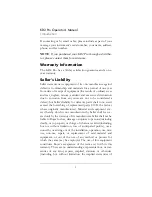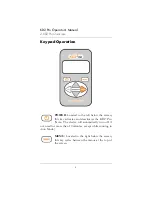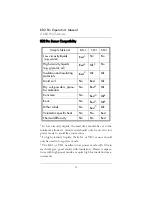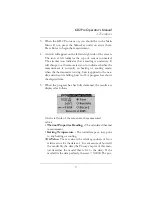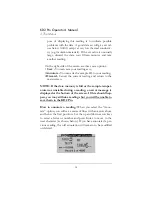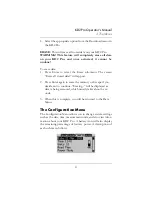
12
KD2 Pro Operator’s Manual
2. KD2 Pro Overview
• Do NOT attempt to make measurements in liquids with
the KS-1 or TR-1 in high power mode. The additional
heating from the higher heat input will cause free con-
vection and compromise the measurement (see Chapter
6 for more information on free convection).
• Do not attempt to make measurements in low viscosity
fluids with the SH-1 (dual needle) sensor in either high
power or low power mode.
• One motivation behind allowing power mode configura-
tion is to allow the TR-1 and SH-1 sensors to make bet-
ter measurements in frozen materials where the
decreased heat input in low power mode is less likely to
cause phase change (melting) of the frozen sample.
One situation where we do recommend a non-default
power mode setting is the measurement of thermal con-
ductivity of snow. In this case, we recommend using the
TR-1 needle to reduce issues with contact resistance,
and we recommend configuring the sensor to low
power mode to reduce issues with melting.
Installing the Sensors
The KD2 Pro’s three sensors have been designed for ease of
installation and use. The following considerations should be
observed when installing the sensors.
•
The sensor should be inserted all the way
into the
medium to be measured.
• For the single-needle 10cm sensor, a drill bit has been
included that can be used to drill a pilot hole in material
such as wood or hard soil. For rock (or cured concrete),
a 1/8” hole can be drilled with a rotohammer and filled





